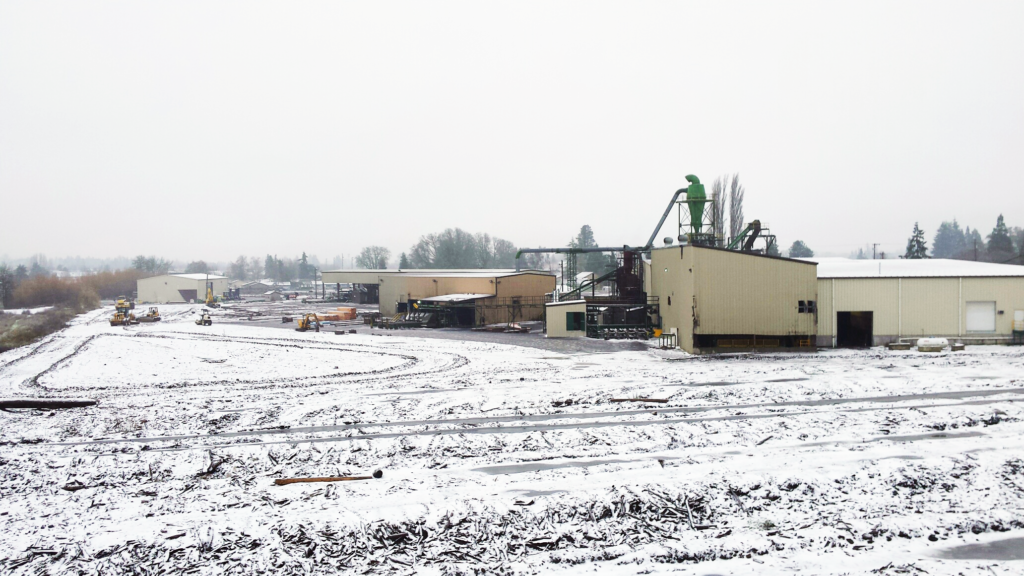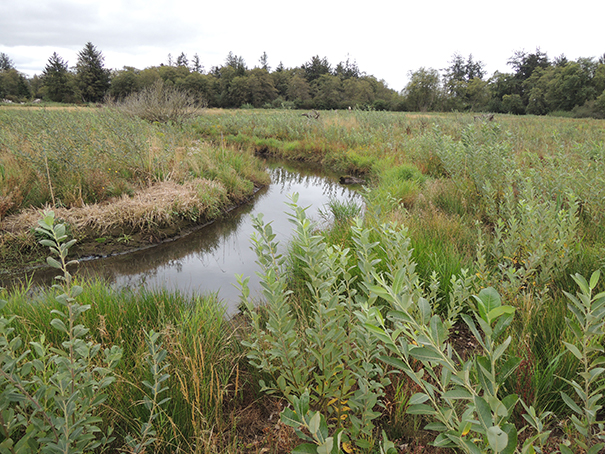Oregon State Forests are multi-use working forests, managed by the Oregon Department of Forestry (ODF) to provide the “greatest permanent value” for surrounding counties, which includes harvest, recreation, and conservation. At roughly 700,000 acres, these lands represent just 4 percent of all forestland in Oregon but they are enormously important to north coast communities. Around 41 percent of forestland on the north coast is managed by ODF and these forests account for 15-50 percent of the timber supply at our four Oregon sawmills. Now ODF is proposing to reduce the economic benefits of these thriving forestlands dramatically without consulting or gaining approval from the surrounding communities and county beneficiaries.
Last month, ODF released initial modelling of a Habitat Conservation Plan (HCP), which could guide forest managed on state forests for the next 70 years and convert half of all productive state forestland (331,000 acres) into a wildlife reserve mainly for spotted owl and marbled murrelet. The proposed conservation set-asides change the agency’s focus from protecting existing wildlife habitat to actively creating new habitat. The result? Sawmill jobs will be lost and our state forests will become a financial liability for the state and local communities.
North Coast communities will be the hardest hit.
Nearly 80 percent of the proposed conservation set asides—and the economic and social losses they inflict— would be borne by north coast communities. As currently proposed, this HCP would reduce harvests on the north coast (Tillamook and Clatsop State Forests) by 25-30 percent from current levels, resulting in $27.6 million in lost annual revenue to the state and rural counties, not to mention hundreds of millions of dollars in lost income and opportunities for local businesses.
It’s a terrible thing to have to close a sawmill. Back in 2003 we were forced to shut down our Fort Hill sawmill due to harvest reductions on the Siuslaw National Forest. These facilities are often the backbone of a rural community and it’s heartbreaking to have to deliver such news to employees and their families. The loss of one small sawmill like our mill in Banks would result in $32 million in direct economic opportunity losses annually, including 130 direct and indirect family-wage jobs. Our Warrenton and Tillamook mills are over twice that size and each generate $100 million worth of activity in north coast communities.
We’re not the only business that depends on these forests. Roughly 25 sawmills currently purchase timber from Oregon State Forests. Another 15 or so veneer, plywood, pulp, paper, particleboard, and pellet manufacturers depend on those mills to provide raw materials for their operations.
Reduced ODF harvests will trickle down and impact a wide array of small businesses. The proposed HCP cuts timber harvests by 29 mmbf on Clatsop State Forest alone. Given going rates for local contractors, I’d estimate that’s a loss of approximately $7 million in annual income for Clatsop County’s family-owned logging and trucking businesses.
Prioritizing new habitat at all costs creates harmful imbalances on public lands.
We’ve seen what happens when public land management swings out of balance. Back in the early 1990s, nearly 18 million acres of federal forestland in Oregon were effectively converted into a habitat reserve for the spotted owl. Harvest levels on these forests were reduced by 90 percent in the hopes that it would improve conservation outcomes for the threatened birds. Dozens of sawmills closed and communities crumbled. Thirty years later, spotted owl numbers continue to decline while the majority of federal forestland grows increasingly over-crowded, diseased, and prone to catastrophic wildfires.
A more recent example of the problems of imbalance on public lands is the Elliott State Forest located just north of Coos Bay, OR. For decades, sustainable harvests provided funding for Oregon’s Common School Fund. Over the years, Oregon State Forest managers increasingly promoted habitat creation hoping to stem the tide of lawsuits over endangered species, which slowed or prevented timber sales and reduced revenue needed for schools and forest management. When timber harvests were shut down, it didn’t take long before the forest became a liability rather than an asset to the state. So much so, that in 2016 the state attempted to sell the forest to private industry. The state then abandoned that plan and had to sell $100 million in bonds to buy a portion of the forest out of its obligation to the Common School Fund. The state will have to repay the bonds to investors over 20 years at 3.8 percent interest and it still needs to come up with another $121 million pay off schools for the lost revenue generation. Where this money will come from is unclear as the state has been unable to come up with a viable alternate future for the forest. The Elliott State Forest is only 82,000 acres. Imagine the scale of the economic consequences if ODF sends 700,000 acres of northwest state forest down a similar path.
Oregon can’t afford more ineffective habitat reserves on our working forests.
Oregon State Forests are supposed to be self-sustaining. It is possible to harvest enough timber to cover the costs of managing these forests while providing recreational opportunities and fulfilling the state’s legal obligation to abide by environmental laws and generate revenues for the surrounding rural counties. ODF has already reduced harvest levels to the point where they can no longer afford to protect and manage the forestland in their charge. They are now reaching out to seek financial support from the state’s General Fund, which reduces available revenue for important social services, such as education, transportation, and public health. Further reducing harvest levels is an added and unnecessary drain on Oregon’s already overburdened finances.
Public land management needs to strike a reasonable balance to be sustainable.
Over the past ten years, litigation and advocacy pushed by a handful of environmental interests have restricted ODF’s ability to manage Oregon State Forests. By pursuing a federally assured HCP, ODF hoped to stabilize harvest levels and reduce litigation while providing better conservation outcomes. HCPs are developed at the discretion of the landowner, which can be a private company or a public agency, and are done in consultation with federal wildlife agencies. When ODF started the HCP process, it assured stakeholders that it would pursue a plan that would maintain or increase harvest levels while improving conservation outcomes for vulnerable species. I believe this still can be done given the current timber inventory on Oregon State Forests. However, as proposed, this HCP appears to lock-in an unsustainable financial future for north coast forests for generations to come by reducing harvests and revenues below levels needed to sustain the forest and the surrounding manufacturing base. In fact, this HCP commits a higher percentage of lands to environmental preservation than any HCP we’ve seen in California or Washington.
We are not necessarily against an HCP in concept. We support the protection of sensitive habitat and a healthy balance among economic, social, and environmental values. In addition to protecting endangered species as required by federal and state laws, to be successful an HCP must allow for harvest levels that provide long-term revenue and economic opportunities for rural counties and cover ODF’s management costs.
Turning state forestland into a mostly one-dimensional space—a massive wildlife reserve—is not a balanced approach. The social and economic losses might not be felt immediately, but that should be no comfort to businesses or communities. This HCP reflects a fundamental shift in how and for whom these forests are managed. This HCP would refocus priorities away from surrounding communities who use and depend on these resources and toward habitat creation no matter the cost. With 18 million acres of forestland already set aside for conservation in Oregon, let’s practice sustainable forestry on our few remaining public forests to provide local wood products and support surrounding communities. Despite ample resources, the U.S. now imports 35 percent of our wood products from overseas while Oregon’s rural communities pay the price.
Over the next two months, ODF will be collecting public comment on the proposed HCP. Hampton will be front and center at every meeting to identify opportunities to improve the proposed HCP but we need help. Please let your elected officials know that such dramatic reductions of harvests on state forests is neither necessary nor acceptable. The Board of Forestry should reject any HCP that does not protect forest sector businesses or serve the broader interests of local communities and the public services they depend on.



